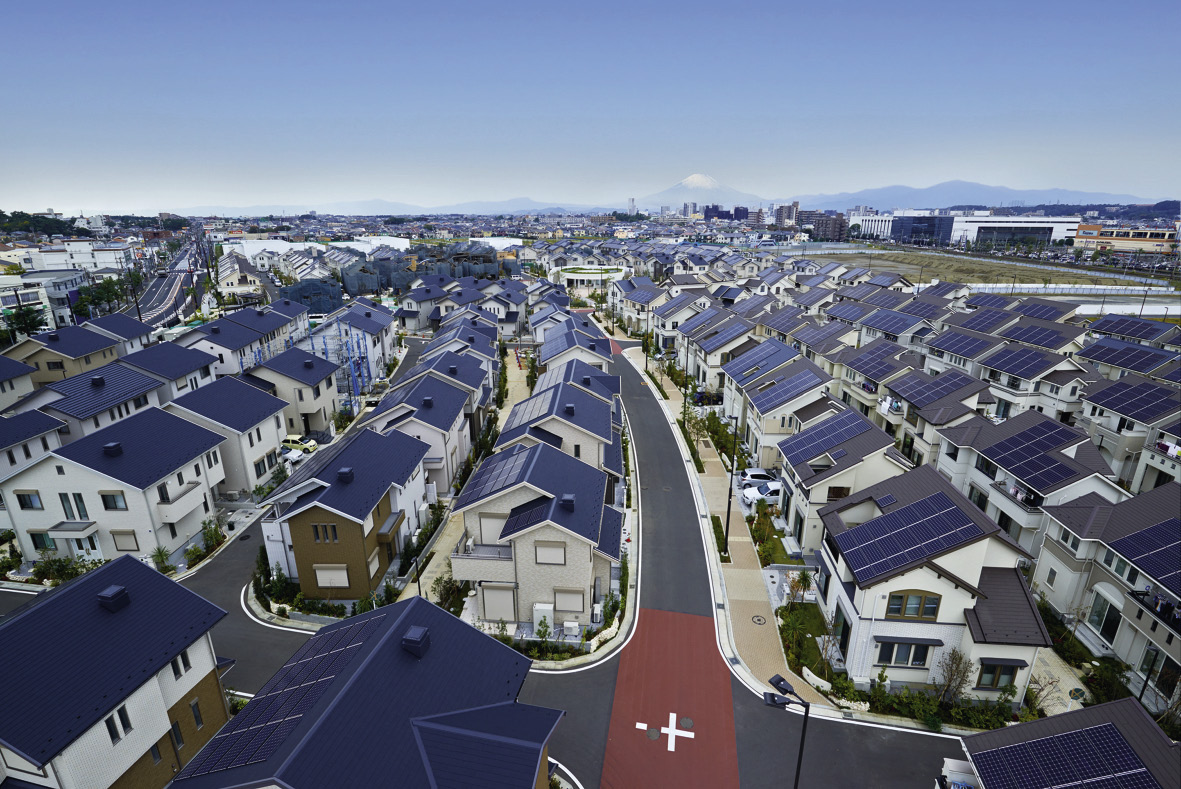Research firm RTS Corp. says that companies throughout Japan’s solar value chain need to start banding together now to push the government to further prioritize solar in the next version of the energy plan. An update will likely be issued in 2021-22, as the Ministry of Economy, Trade and Industry (METI) revises the plan every three to four years.
“It is expected that the energy mix will definitely be changed in the next revision,” RTS says in the July edition of its Monthly PV Highlights report. “PV has just gotten through the preliminaries, and is now standing on the starting line of the finals.”
The last version of the energy plan was drafted in 2015. As part of the broad policy document, METI said renewables would account for 22-24% of the country’s energy mix by 2030. That remains unchanged in the latest version of the plan, as does METI’s nuclear generation target of 20-22%. Coal is to account for 26% of the national energy mix by 2030, while LNG and oil will account for 27% and 3%, respectively.
Statistics from the International Renewable Energy Agency (IRENA) show that Japan had cumulatively installed 49.04 GW of solar by the end of the 2017 calendar year. And METI had approved about 50.5 GW of additional solar capacity for development by the end of May. But by the end of the 2016 Japanese fiscal year, renewable energy accounted for roughly 15% of power generation, with solar clocking in at just 4.8% of the total, according to the Institute for Sustainable Energy Policies (ISEP). Given that about 7 GW of solar was installed in the year to end of March 2018, the share of PV in the national renewables mix has also likely risen.
But RTS argues that the industry needs to start devising a strategy to “make PV a mainstream power source ahead of schedule,” echoing language used by METI in the new energy plan that positions renewable energy as a “mainstream” power source for the future. The Tokyo-based firm says that the government can do this partly by giving solar a bigger share of the renewables portion of the national energy mix. It also notes how solar enjoys an advantage as the only renewable power source under current Japanese legislation that can be used to directly supply electricity to end users.
“By combining PV with electricity demand and electricity storage system according to its scale and integrating them, we can shift to a society of distributed energy for self-consumption,” it adds.
RTS also urges the central government to come up with more supportive policies to back the development of key companies throughout the solar value chain, from electricity management technology specialists to manufacturers and electricity service providers.
But if METI does revise its 2030 energy mix targets when the next strategic energy plan is drafted several years from now, the big question will be whether the government can achieve its nuclear target in the face of widespread public opposition. It also remains to be seen whether renewables such as solar can eat into nuclear’s share of the national energy mix when and if the target is revised again. METI continues to describe nuclear energy as a critical baseload power source in the latest version of the energy plan, but only five of the country’s 40 usable nuclear reactors are operational — suggesting that space theoretically still remains for other technologies to fill the void.
However, while the possibility exists for PV to play an even bigger role in the future Japanese energy mix than currently envisaged by the government, the industry still needs to resolve a number of issues that could hinder development. Cost is one concern, although RTS notes that prices for new PV systems continue to fall, citing reports of domestically made residential solar systems averaging about JPY 250,000 per kilowatt, including materials and installation costs.
Other issues that need to be dealt with is the slow speed at which new PV projects are approved. “In particular, for small-scale projects (low-voltage grid connection), sales of distributors and builders have been seriously impacted,” RTS says. It also points to longstanding issues such as grid restrictions as potential threats to future PV deployment, while acknowledging the many new opportunities presented by the ongoing emphasis on the self consumption of electricity generated by small PV arrays, as well as the aggregation of capacity as virtual power plants (VPPs).
However, RTS ultimately sees the government’s latest energy plan, as well as METI’s pledge to establish clean energy as a mainstream power source, as proof that the government remains committed to the continued deployment of renewables such as solar. “(It) indicates Japan’s policy to further expand renewable energy with visions for 2050,” it says.
This content is protected by copyright and may not be reused. If you want to cooperate with us and would like to reuse some of our content, please contact: editors@pv-magazine.com.



By submitting this form you agree to pv magazine using your data for the purposes of publishing your comment.
Your personal data will only be disclosed or otherwise transmitted to third parties for the purposes of spam filtering or if this is necessary for technical maintenance of the website. Any other transfer to third parties will not take place unless this is justified on the basis of applicable data protection regulations or if pv magazine is legally obliged to do so.
You may revoke this consent at any time with effect for the future, in which case your personal data will be deleted immediately. Otherwise, your data will be deleted if pv magazine has processed your request or the purpose of data storage is fulfilled.
Further information on data privacy can be found in our Data Protection Policy.